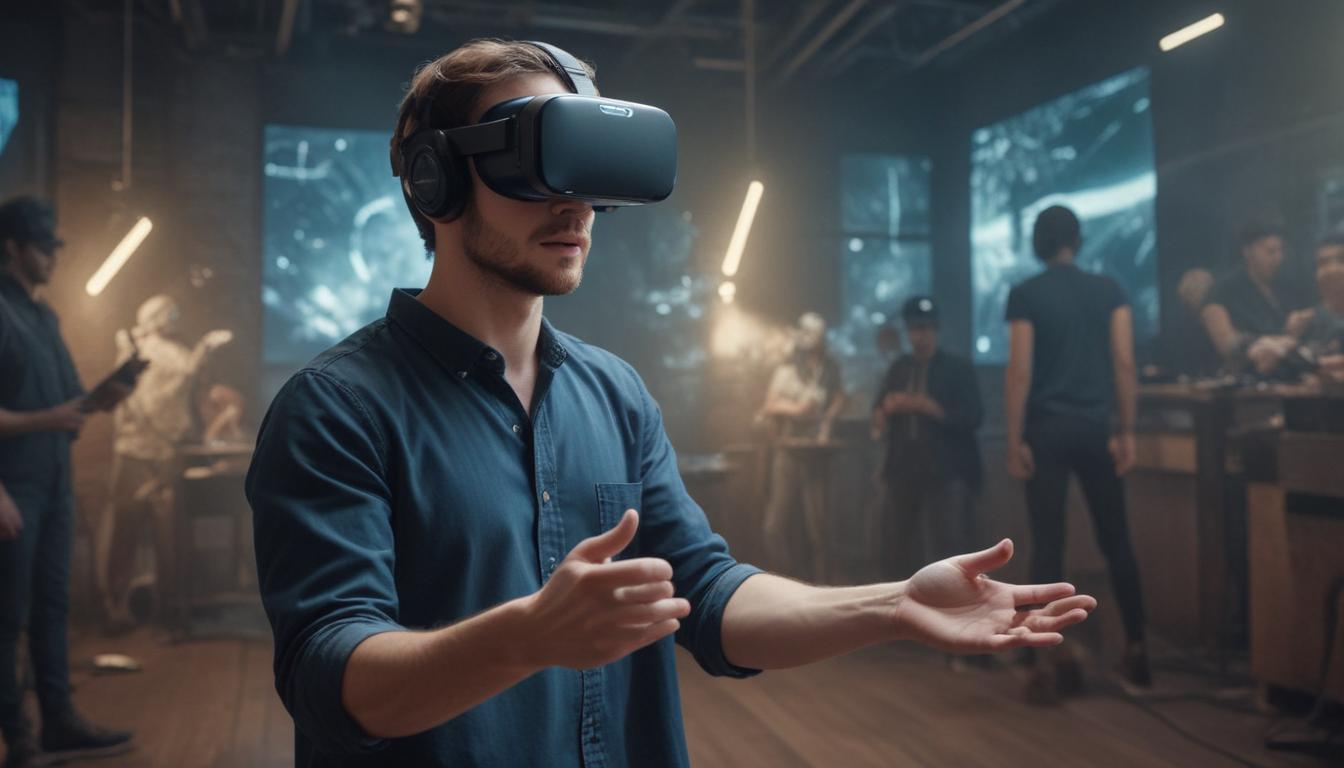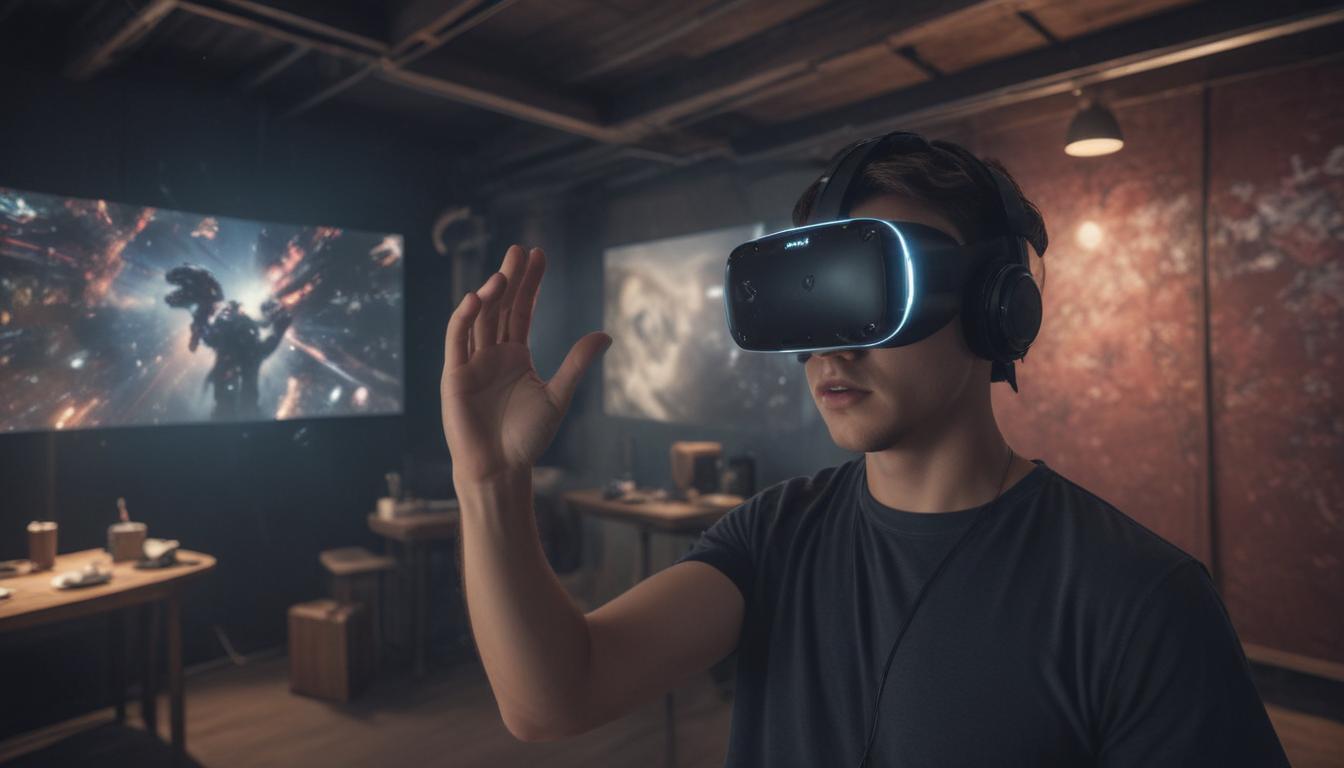Now Reading: Unlock Immersive Worlds with AR & VR
- 01
Unlock Immersive Worlds with AR & VR
Unlock Immersive Worlds with AR & VR

Augmented Reality (AR) and Virtual Reality (VR) Immersive Experiences
Are you constantly hearing the terms AR, VR, and “the metaverse” but feel lost in the technical jargon? It can feel like the future is arriving without a manual, leaving you to wonder what these technologies actually are and how they might affect your life or business. The good news is that the core concepts are much simpler than they sound. These are not just futuristic fantasies from science fiction; they are powerful tools that are already reshaping how we work, play, and interact with the world. This guide will demystify AR and VR, breaking down what makes them different and showcasing the incredible experiences they unlock.
Understanding these technologies is the first step toward harnessing their potential. Whether you are a business owner looking for an innovative edge, a creative professional exploring new mediums, or simply a curious individual wanting to stay ahead of the curve, gaining clarity on immersive experiences is essential. Forget the confusion and get ready to explore the distinct and exciting worlds of augmented and virtual reality.
The Core Difference AR vs VR
Though often mentioned together, Augmented Reality and Virtual Reality offer fundamentally different experiences. The easiest way to understand them is to think about where they place you. Virtual Reality (VR) creates a completely artificial, digital environment that you are fully immersed in. When you put on a VR headset, like a Meta Quest or a Valve Index, your real-world surroundings disappear. You are transported to another place entirely, whether that’s the surface of Mars, a fantasy kingdom, or a virtual conference room. VR tricks your senses, primarily sight and sound, into believing you are somewhere else, allowing for unparalleled levels of immersion and simulation.
Augmented Reality (AR), on the other hand, does not create a new world; it enhances the one you are already in. AR technology overlays digital information, such as images, text, and 3D models, onto your view of the real world, typically through a smartphone camera or specialized smart glasses. A classic example is the mobile game Pokémon GO, where digital creatures appear in your real-world environment. Another is using the IKEA Place app to see how a digital couch would look in your actual living room. AR keeps you grounded in reality while adding a useful or entertaining digital layer on top of it.
Beyond the Hype Real World Applications
These technologies have moved far beyond the realm of gaming and entertainment to deliver real value across numerous industries. Their unique capabilities are solving complex problems and creating efficiencies that were previously impossible, proving that their impact is both profound and practical.

Virtual Reality Changing How We Train and Play
In the world of VR, the ability to create realistic simulations is its greatest strength. Industries with high-stakes training, such as aviation, medicine, and manufacturing, are using VR to create safe, repeatable, and cost-effective training environments. Surgeons can practice complex procedures without risking a patient’s life, pilots can run through emergency scenarios, and factory workers can learn to operate heavy machinery in a controlled virtual space. This immersive learning leads to better knowledge retention and muscle memory.
Beyond training, VR is revolutionizing entertainment and social interaction. It offers gamers deeply immersive worlds that feel incredibly real. It also allows people to attend live concerts, tour exotic locations, and visit museums from the comfort of their homes, breaking down geographical barriers. These shared virtual experiences are a foundational element of what many envision for the future of social networking and the metaverse, creating spaces where people can connect in more meaningful ways than a simple video call.
Augmented Reality Enhancing Our Everyday World
AR’s power lies in its ability to provide context-aware information exactly when and where you need it. In retail, AR is transforming the shopping experience. Customers can use their phones to “try on” clothes, makeup, or glasses virtually before making a purchase, reducing returns and increasing buyer confidence. In-store navigation can guide shoppers directly to the products they are looking for, while pointing a camera at a product can bring up reviews, tutorials, and pricing information instantly.
This technology is also a game-changer for education and fieldwork. A student can point their tablet at a textbook diagram of the human heart and see a beating, 3D model appear on the page. A field technician repairing complex equipment can wear AR glasses that overlay digital instructions and schematics directly onto their view of the machine, speeding up repairs and reducing errors. AR seamlessly blends the digital and physical, making information more accessible, interactive, and useful in our daily tasks.




































